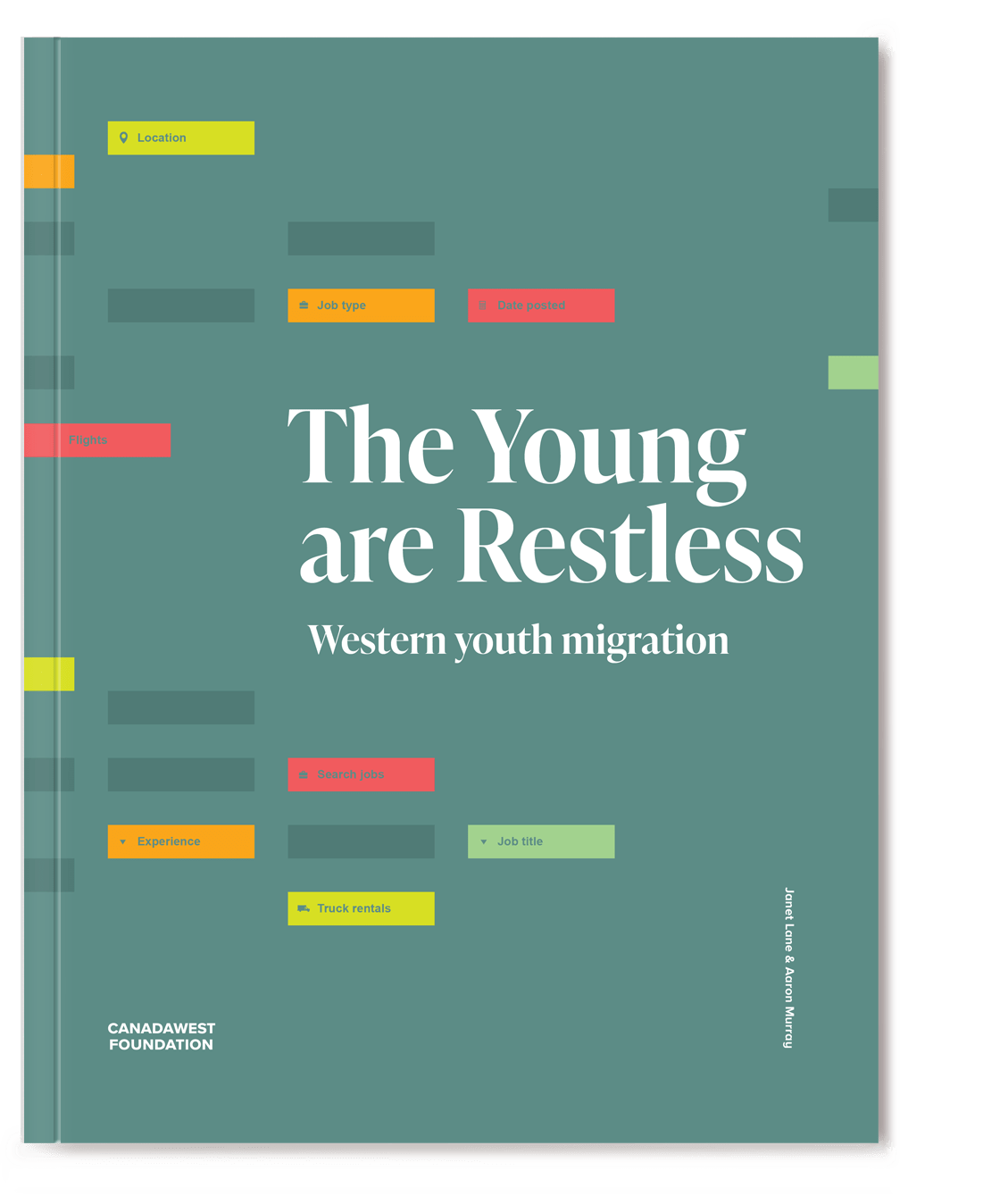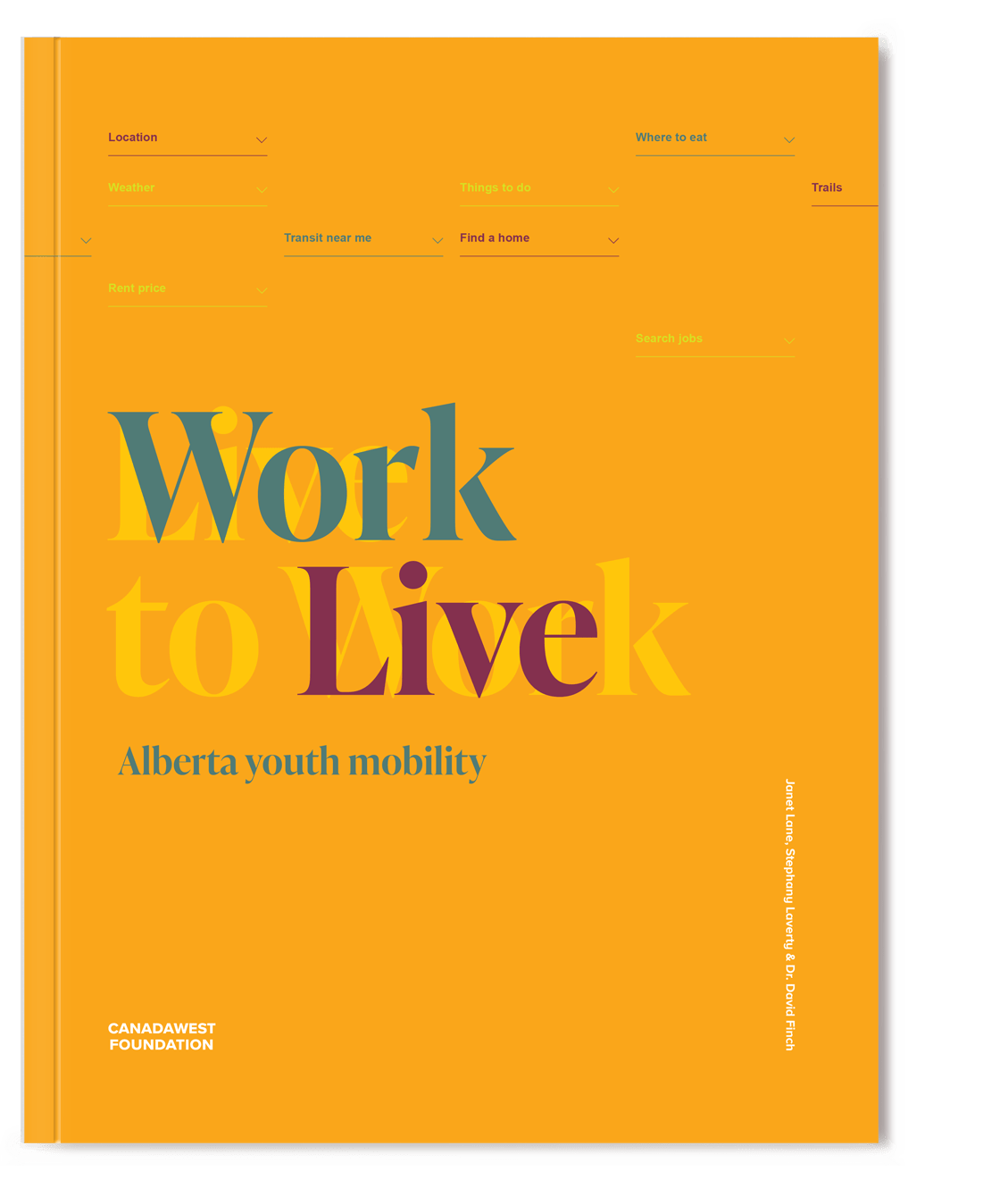The Young are Restless: Western youth migration
Janet Lane and Aaron Murray
Two new reports by Canada West Foundation examine interprovincial youth mobility trends in western Canada. Work to Live: Alberta youth mobility and its companion piece The Young are Restless: Western youth migration examine the how and why of migration patterns and recommend ways to attract and retain youth.
 |
The Young are Restless Western youth migration Read the full report |
 |
Work to Live Alberta youth mobility Read the full report |
Project funding provided by Prairies Economic Development Canada and Calgary Economic Development.
Executive summary
In a complete reversal of past flows, more 25-29-year-olds moved out of Alberta than moved into the province between 2015 and 2021. This raises two questions: (1) Is this result unique to Alberta? and (2) What is the economic context behind this reversal?
Research shows that youth tend to leave their hometowns and provinces to study or for job opportunities. Their intent is to move towards what they perceive to be a better quality of life, even if they later move back to be closer to friends and family.
Youth move at three main decision points: at graduation from high school when they may leave home to study; on graduation from post-secondary education when they move to begin their careers; and five to 10 years into their careers when they move to advance their careers or to settle down and raise a family.
Youth in Canada’s West are mobile, moving into and out of every province. Manitoba and Saskatchewan have experienced net out-migration over most of the last 50 years. Meanwhile, Alberta and British Columbia tend to see youth move back and forth between them with the ups and downs in their economies, with British Columbia seeing net gains since 2014. Alberta, a beneficiary of youth migration for the previous 30 years, saw a drastic decline in net youth migration in 2015 and since then, it has been negative for the last six years within the 24-29 and 30-34-year-old sub-cohorts.
Jobs are coming back. Between the third quarters of 2019 and 2021, there was more growth in job vacancies in Saskatchewan (83 per cent) than in Manitoba (52 per cent), Alberta (63 per cent) and B.C. (48 per cent).
When job prospects are discouraging at home, youth respond by either moving to where they perceive more jobs to be available or by choosing to further their education. Indeed, more young Albertans have enrolled in post-secondary schools since 2015, when job prospects in Alberta deteriorated along with the drop in oil prices. Meanwhile, enrolment of domestic students fell in the other western provinces.
B.C. led the West in all job growth between 2010 and 2019. It had the best prospects for youth between 2015 and 2019 when unemployment fell to six per cent in 2018, while in the Prairie provinces it hovered above 10 per cent. During the pandemic youth in Saskatchewan fared the best, but all provinces saw spikes in youth unemployment.
However, jobs are coming back. Between the third quarters of 2019 and 2021, while job vacancies grew in every sector in at least one western province, there was more growth in job vacancies in Saskatchewan (83 per cent) than in Manitoba (52 per cent), Alberta (63 per cent) and B.C. (48 per cent). But B.C. is still attractive to youth. In the third quarter of 2021, in some well-paying sectors (e.g., information and cultural technology, professional, scientific and technical services and health care) B.C. offered higher wages and had more than twice as many job vacancies as Alberta.
On average, youth wages remain higher in Alberta. In 2019 the premium was $8,000 for 25-34-year-olds. Since 2012 the gap in youth wages for 16-24-year-olds across the western provinces narrowed, as it did for all ages.
Economic forecasts predict that Alberta and B.C. will have strong growth (four per cent) in 2022. While Alberta will continue at that pace, Saskatchewan and Manitoba will beat B.C. in 2023 (over three per cent compared to B.C.’s 2.5 per cent).
Youth have been drawn to the higher numbers of jobs available in some sectors in B.C. and are apparently undaunted by the higher cost of living in its major cities. Rents are higher, rental vacancies are lower, and home purchases much more expensive in Vancouver and Victoria than anywhere in the Prairies, yet youth still move there. The numbers also show that youth have left small cities and rural areas of Saskatchewan and Alberta, while the number of youth in small cities in British Columbia has grown.
Canada West Foundation’s companion report, Work to Live took a deep dive into young Albertan’s choice about where to live that shows that while they weigh economic factors, they consider other factors too. Some youth in Alberta perceive that not only their job and career prospects, but also their quality of life will be better in another province.
Read the full report
